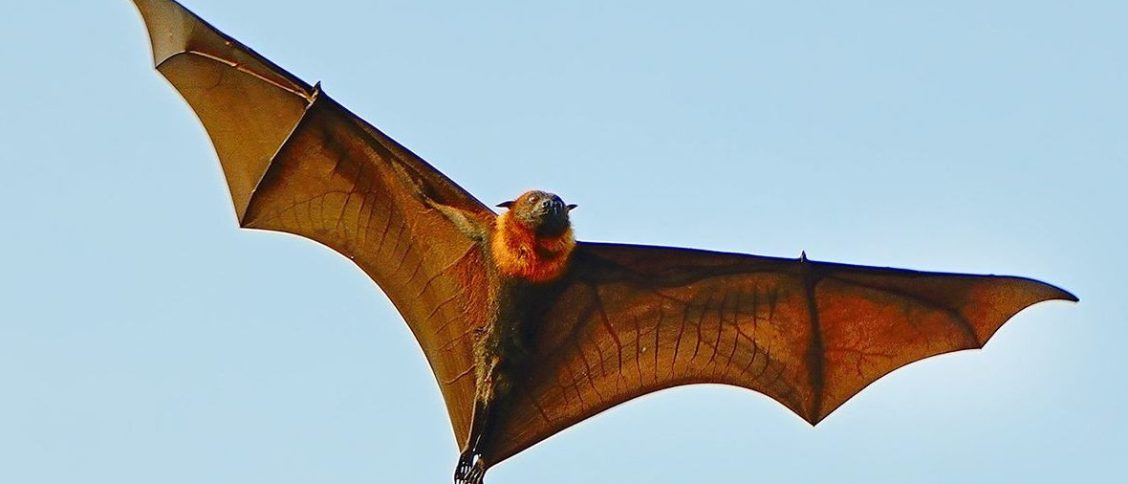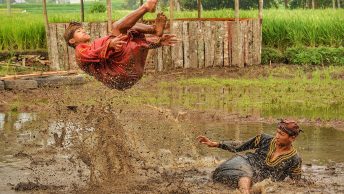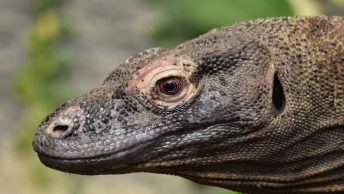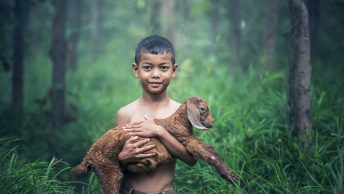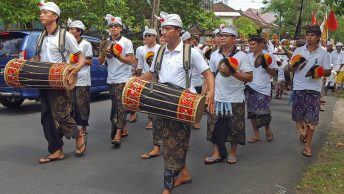It lives its life upside down. It sleeps upside down, eats upside down and loves upside down. The kalongen is also an enormous bat – the largest of all flying dogs with a wingspan of one and a half metres.
The kalongs, the very largest of all flying dogs, live, among other things, in the mangrove forests at Padarøya in eastern Indonesia. But with their one and a half meter wingspan, they are some fearsome creatures. As they take off from their shelters, they let out heartbreaking howls. The robust wings with their large airfoils make a powerful flapping sound, and the air wave from the wing movements swirls up dust and small particles like from a helicopter.
During the day, they gather like bunches of bananas and only move if they are startled. Then the large colony takes to its wings and takes off in close order. When thousands of kalongs circle their haunts, the sky can be completely darkened. The kalongs, or flying dogs, have the amazing ability to fly in formation. With exactly the same distance to the leading galley, the others follow in a row.
Not out for blood
But it is not easy to come across them. To get to the remote Pádar Island, we hired an old fishing boat in Kampung Komodo, the neighboring island of Komodo’s only permanent settlement and a three-hour boat journey from the giant bats’ haunt.
The lush mangrove forests stand in stark contrast to the otherwise barren landscape of the surrounding islands. Pádarøya, on the other hand, is surrounded by almost impenetrable mangrove groves. To get there we used small canoes and paddled until the mud and mangrove roots stopped us. We then waded barefoot and unprotected in the knee-deep mud. Both snakes and poisonous spiders lurk in the mangroves.
The kalongs, while never terrifying to look at, are completely harmless. The main dish is mangoes and figs. It also hunts for insects and small vertebrates, but, unlike the South American vampires, is not after blood. The kalongs can also be kept in captivity and are easy to tame, but in the wild they fear humans. In Indonesia, they are considered a delicacy. They are caught in large quantities and eaten with gusto. Personally, I did not get any great gastronomic “look” from the kalong meat, but that is probably due to the appearance of the animals and not the taste of the meat.
Sneak us in
The kalongs are fearful animals and take to their wings at the slightest carelessness or sudden movement. Wading silently between a network of mangrove roots and half a meter deep mud is not easy. During the day, we therefore chose to sneak in via the desert-like hills in Pádarøya’s interior. This is impossible at night as the entire island is covered in metre-sized cobwebs. They are easy to see during the day, but the strong webs catch you like a fish in a net at night. The threads are thick and tough like nylon cords and the poisonous yellow-body spiders come running if you step into the web. The spiders are not deadly, but very poisonous. While it was light we never quite came upon the flying dogs, but as evening approached they calmed down more. We waded between the mangrove trees and got close enough that with a very strong telephoto lens we could study the strange life of the kalonges.
A life upside down
With the exception of hunting and flight, they live an upside-down life. Everything is upside down. Besides eating, talking and sleeping upside down, they also get off upside down. The excrement piles up in big smelly piles under the kalong clusters. The stench is unbearable, but the bats seem to be enjoying themselves. Even courtship, love and making love take place upside down. By the way, it does for some people too, so then we have something in common. Seeing a courtesan between two kalongs is a unique experience. Apart from hanging on their heads, they seem entirely human in their approach. they kiss, pat, hug and hold each other. The spectacle is greatest late in the day. The large wings that fold around the partner become translucent and all movements become like black shadows behind a tea-colored canvas cloth. Body, head and the thin fingers stand out in silhouette and you follow the love making like a shadow theatre.
When the sun has set and the sky is colored purple, the kalons lighten up like big black clouds and cover the evening sky. The screams and wingbeats replace the silence and the night’s hunt for food can begin…
Facts
Flying dogs are widespread throughout central Southeast Asia from Thailand in the north to Australia in the south. The largest and most untouched colonies are found in Indonesia and on the western Pacific islands. To visit Pádarøya you have to hire a boat in Labuhanbajo on Flores or Sape on Sumbawa from NOK 500 per day all inclusive. Large colonies of flying dogs are also found on Sumatra, Sulawesi and Timor. These can be reached by canoe from nearby settlements.
Many rent a boat in Bali or Lombok and include, among other things, Pádarøya in one-week or two-week tours. These cruises can be booked with local tour operators in Bali (Kuta) or Lombok (Mataram). Air tickets to Bali cost from NOK 8,000.
Photo credit: Shutterstock

